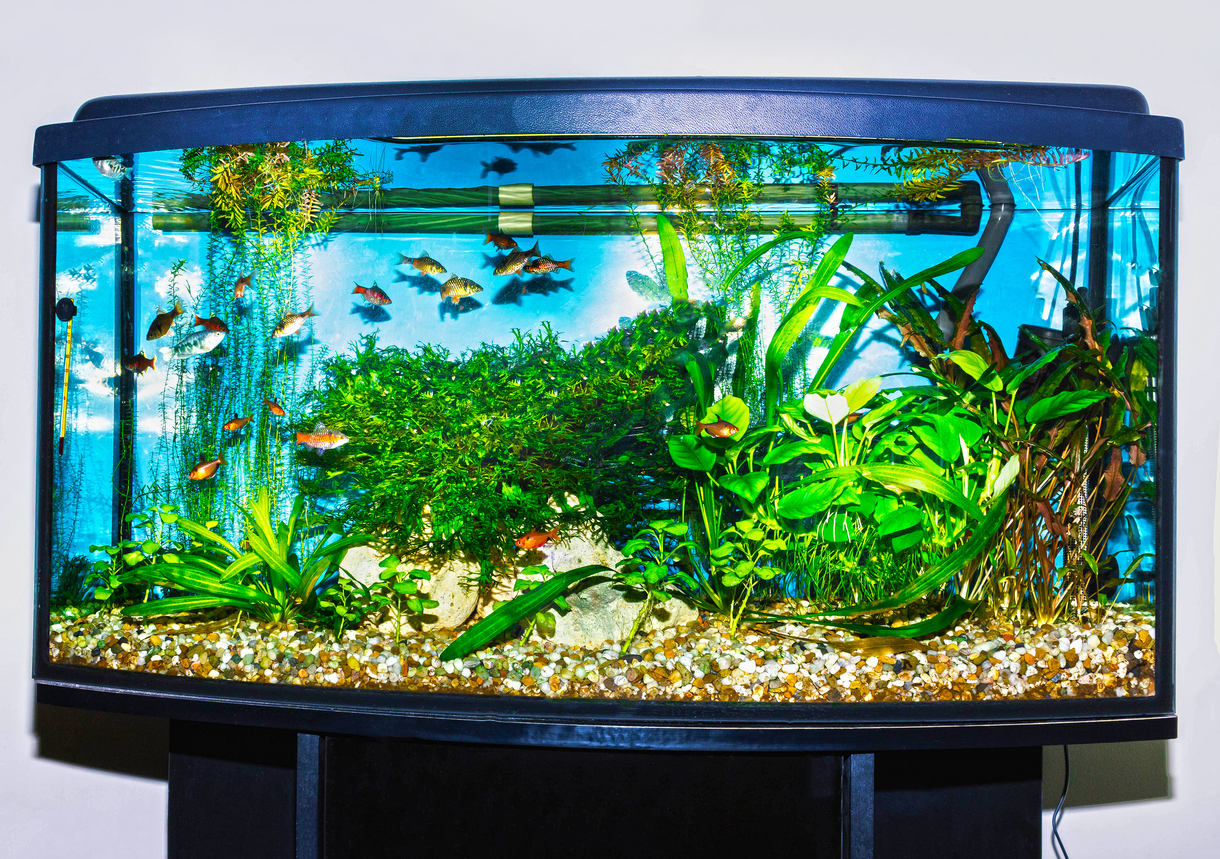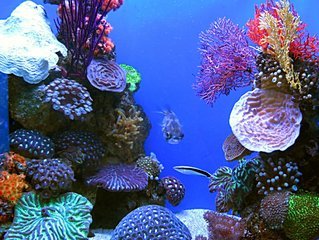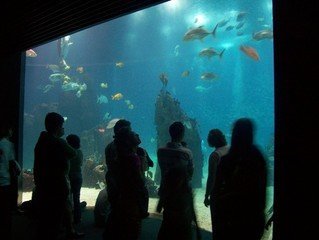A new backdrop can restore the joy and excitement to a tank. However, few people have the money or time to go to the pet shop to buy a new backdrop every week. For this reason, more and more people are deciding to make their own.
One of the easiest backdrops you can make for your tank consists out of little more than styrofoam and a roll of foil that you will find in the back of your pantry. Measure and cut out a piece of styrofoam that will fit neatly into the back of your tank. Tear off pieces of foil and roll it into balls. Then you need to gently unroll the balls and rub small amounts of dark non toxic paint into the wrinkles. Next, you are ready to apply glue to the styrofoam board and stretch the pieces of foil over the glue.
If you prefer something that looks a little more industri al you may want to consider playing around with the cement look. To make this backdrop you will need another styrofoam board to fit your tank, a palette knife, and a runny mixture of cement and water. Use the knife to apply the concrete to the board in thin layers. Continue in this manner until the entire board has been covered. You may need to apply a second layer of cement to ensure that nothing shines through. This second layer is a good time to experiment with textures. Even if you do not decide to experiment with textures this industrial backdrop will have a striking effect when incorporated in your tank.
al you may want to consider playing around with the cement look. To make this backdrop you will need another styrofoam board to fit your tank, a palette knife, and a runny mixture of cement and water. Use the knife to apply the concrete to the board in thin layers. Continue in this manner until the entire board has been covered. You may need to apply a second layer of cement to ensure that nothing shines through. This second layer is a good time to experiment with textures. Even if you do not decide to experiment with textures this industrial backdrop will have a striking effect when incorporated in your tank.
Making new backdrops for your tank is not only a fun activity but it is also a great way to change aesthetics without spending a lot of money. With just a few simple supplies you can make a wide range of different backdrops.


 e fish in your tank have enough room to grow and thrive. Not having enough space is one of the most common reasons that these fish become aggressive or distressed.
e fish in your tank have enough room to grow and thrive. Not having enough space is one of the most common reasons that these fish become aggressive or distressed.
 ensure that the
ensure that the 
 esembles a large tray.
esembles a large tray.
 ited by your own artistic ability.
ited by your own artistic ability.
 cales it is an indication that there is an issue in your tank that is causing disease or stress. However, if you are not able to remove the corpse from the tank in time it will not be possible to look at the remains. In that case, you need to make a careful observation of your remaining pets.
cales it is an indication that there is an issue in your tank that is causing disease or stress. However, if you are not able to remove the corpse from the tank in time it will not be possible to look at the remains. In that case, you need to make a careful observation of your remaining pets.

 emical changes in their environment.
emical changes in their environment.



 or activities. If you are planning on partaking in something such as swimming with dolphins, check the weather before buying tickets. Also, make sure that you dress for the weather to make the day as enjoyable as it can be. For warmer days, be sure to bring sunscreen and a lot of water.
or activities. If you are planning on partaking in something such as swimming with dolphins, check the weather before buying tickets. Also, make sure that you dress for the weather to make the day as enjoyable as it can be. For warmer days, be sure to bring sunscreen and a lot of water. associated with a trip to the aquarium. As a precaution, there are apps
associated with a trip to the aquarium. As a precaution, there are apps 

 There are a wide variety of systems available. However, the most common types are internal, under gravel, power, canister, or wet or dry. Each one of these has their own advantages and disadvantages. At the end of the day, the
There are a wide variety of systems available. However, the most common types are internal, under gravel, power, canister, or wet or dry. Each one of these has their own advantages and disadvantages. At the end of the day, the